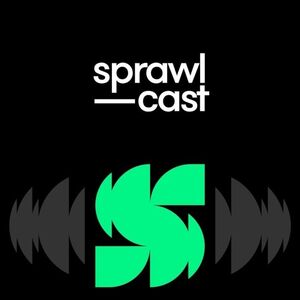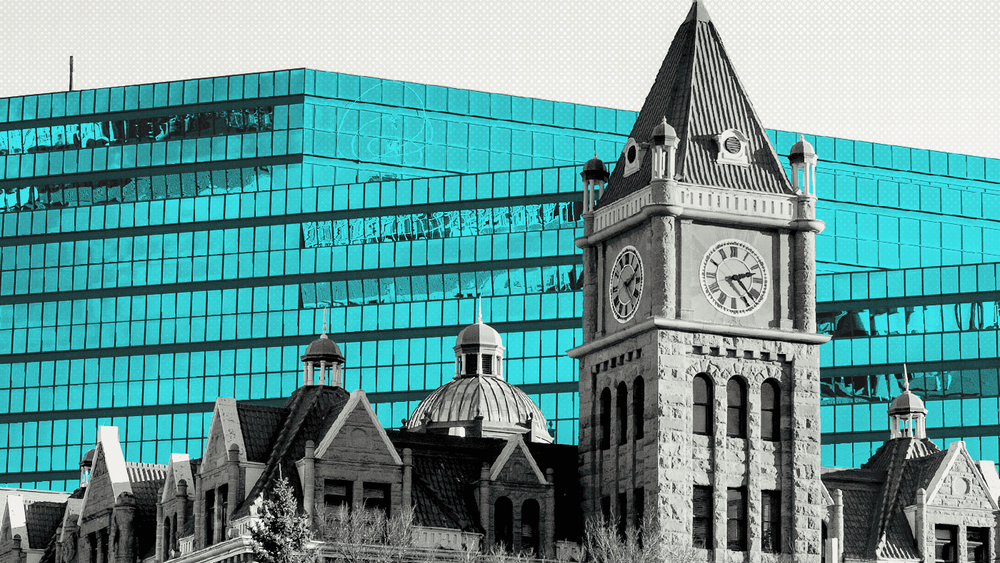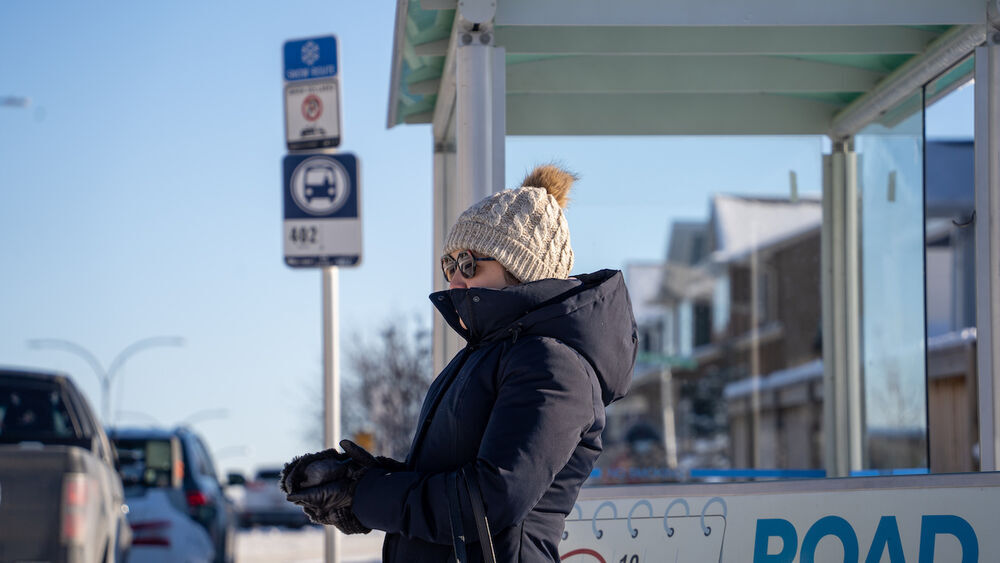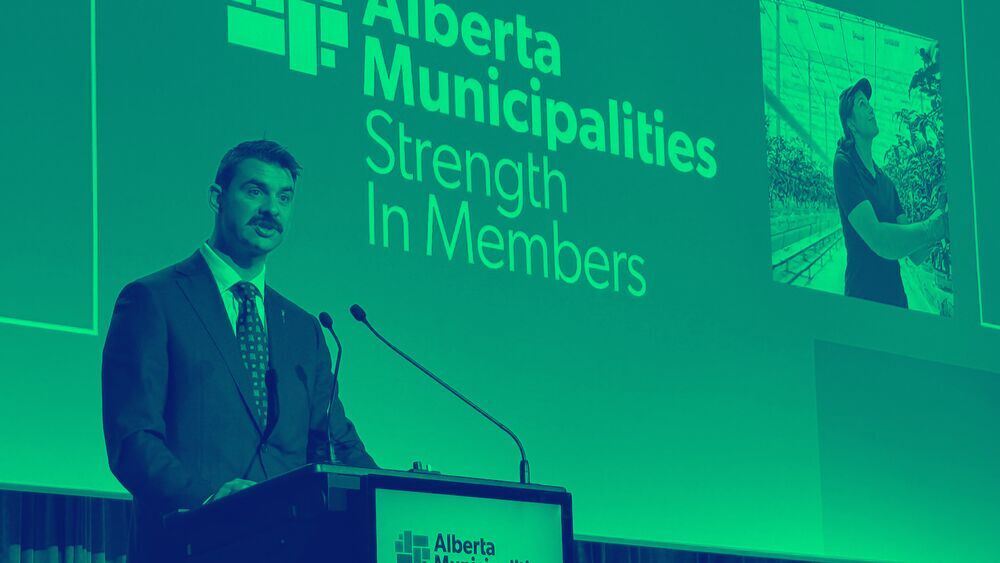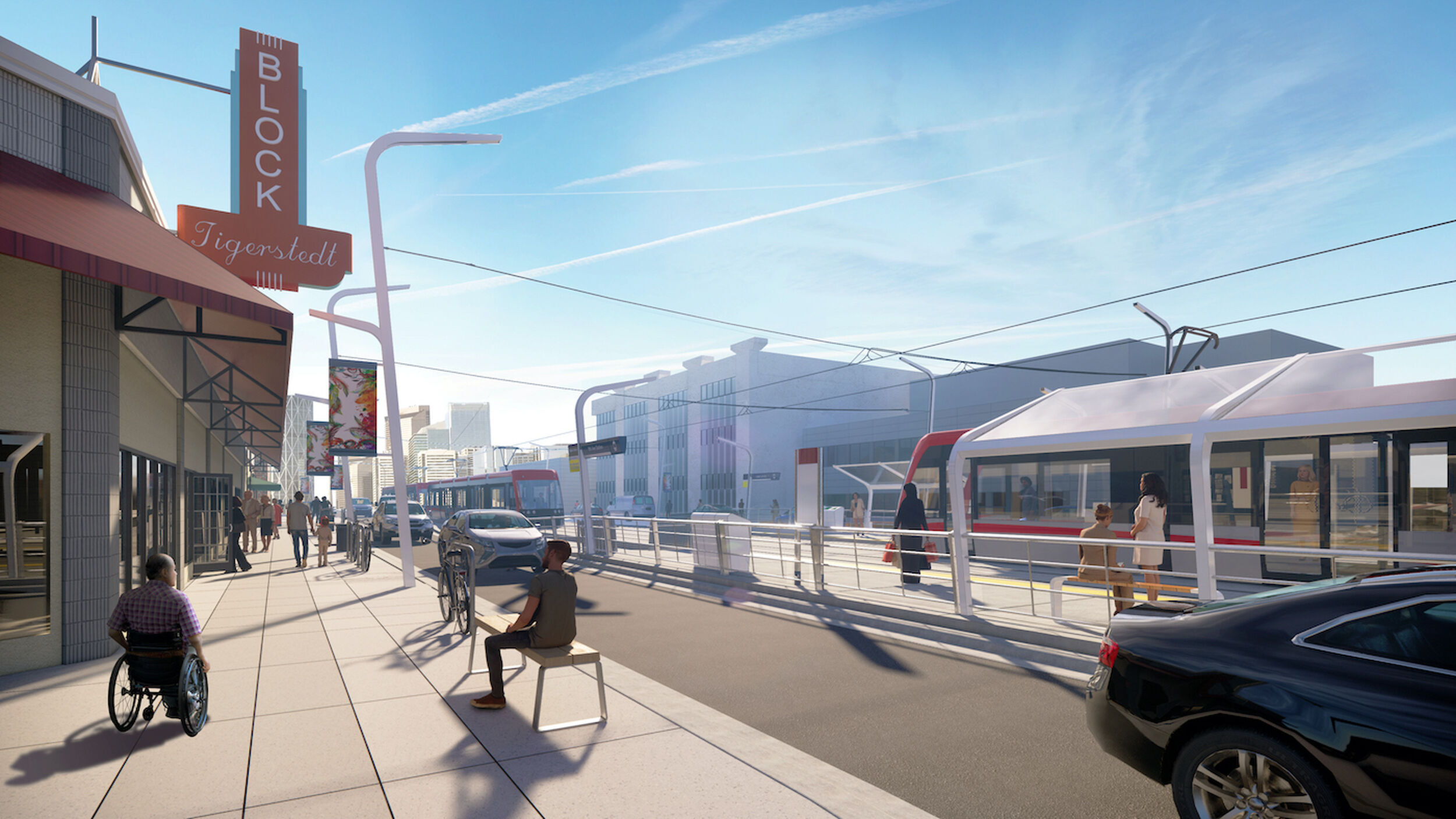
Support independent Calgary journalism!
Sign Me Up!The Sprawl connects Calgarians with their city through in-depth, curiosity-driven journalism. But we can't do it alone. If you value our work, support The Sprawl so we can keep digging into municipal issues in Calgary!
DON MULLIGAN: It is the biggest project ever, and that's – it should not be taken lightly. It should have controversy. It should be well debated.
TERRY WONG: I think the fundamental thing we have to understand is: are we building an LRT? Are we building a transit network? And I believe we're building a transit network.
ANNA GREENWOOD-LEE: The city has a climate resilience strategy, but we're being kind of laggards in terms of implementing it. The Green Line does many things, but among them is it'll help Calgary reduce greenhouse gas emissions, both now and into the future.
JEREMY: Well, it's time to talk Green Line again. You just heard Anna Greenwood-Lee with the Calgary Alliance for the Common Good. And if you feel like we're going in circles on the Green Line, you're not alone.
I feel like I've made this podcast before. But the Green Line is going to Calgary city council in June, as council is slated to vote on a tweaked alignment, and in the run-up to that vote, there have been renewed calls to scale down the project. We'll get into that: the plan itself and the politics behind it. (It’s slated to go before council’s Green Line committee June 1, and council proper on June 15.)
But first let's stay with Greenwood-Lee's point about the city's climate plan.
It’ll help Calgary reduce greenhouse gas emissions, both now and into the future.
If all goes as planned, the Green Line will eventually run from Calgary's far north through downtown into the deep southeast. Stage one will go from 16th Avenue in the north to Shepard in the southeast. According to City Hall, it'll be the equivalent of taking more than 6,000 cars off the road.
This is something that's been almost entirely forgotten. Even the City of Calgary downplays it. It's buried on page 14 of a new 19-page city report on the project. This is the kind of thing that City Hall used to lead with in the 1990s, believe it or not. It's kind of depressing to go through city archives and see how 20 years ago the city would boldly make the case for expanding public transit for environmental reasons.
But now, the business case eclipses all else – and even more so now that the Green Line is forever being analyzed and reanalyzed. So let's get into it.
A tweaked plan was unveiled in May. What's changed?
Let's start with what's changed in the plan. Here are the rough strokes of what's new. In 2017 city council decided the Green Line would run from 16th Avenue North to downtown in an underground tunnel. It would go under the Bow River.
That was the plan up until last year, when city admin recommended scrapping the tunnel plan and running the train on the surface and over the river due to cost and the technical challenges of tunneling. Instead of building stations that are several stories deep downtown, they're looking at more shallow stations in the city core, and the train is now slated to run down the middle of Centre Street in the north and cross the Bow River on a new bridge that will also include cyclists and pedestrians.
ROMY GARRIDO: We are YYC for Transit, and we're basically a group of transit users who need, and therefore support, transit and the expansion of transit in Calgary.
JEREMY: This is Romy Garrido, and she is with a campaign called YYC4Transit being run by Project Calgary. She's also a former staffer for Councillor Druh Farrell.
GARRIDO: At this moment in time, that means we're supporting the Green Line LRT project, and especially in the face of increasing risk due to just a few individuals who have decided to, late in the game, oppose the project.
JEREMY: We'll get to those individuals later in this episode, but Romy is one of many Calgarians who grew up in the suburbs and had to rely on the car to get anywhere. Transit wasn't exactly good in Hidden Valley in far north central Calgary.
GARRIDO: No rapid transit, nothing. You know, a shuttle that would come, like, every once in a half hour kind of thing. So yeah, it really stunts your view of the city you grow up in when you don't really have adequate transit or ways to move around.
JEREMY: And while there's an effort to downscale the Green Line, Garrido says transit users don't necessarily have the luxury of advocating for the service that they rely on.
GARRIDO: When you really look at who's using transit today, it's a lot of folks that don't have the luxury of time and energy to be able to speak out and say, "This is something I need." We're talking about low-income, middle-income working Calgarians who can't engage in this sort of messaging. They can't hire a public affairs firm to do their bidding for them and to talk about why this project should be any other way. It's regular working Calgarians. And so you know what? We've kind of had enough.
We’re talking about low-income, middle-income working Calgarians who can’t engage in this sort of messaging.
For this project, transit users need more transit in the city. We need a way to get around just to get us from point A to B, from our jobs back home. This is – it's an essential service, and so this isn't like other projects in the city like the BMO Centre or the arena where it's for a very specific kind of faction of the population and, you know, the entry fee is high. Transit's for everybody.
JEREMY: This is also the point made by Anna Greenwood-Lee of the Calgary Alliance for the Common Good. She's an Anglican priest, and in that role, she's seen the need for transit as a robust and essential service.
GREENWOOD-LEE: We also have all sorts of people in Calgary for whom driving is not an option. I have a member of my congregation who's blind, and so he sort of laughs when people talk about “how does cutting transit impact you.” He's like, "Well, how else am I going to get around? Right? I can't ride a bike, right? I can't drive." So much of our community that lives with disabilities of one kind or another, transit is their lifeline to get out and about.
JEREMY: Greenwood-Lee says the Calgary Alliance for the Common Good felt compelled to speak out and support the Green Line plan in light of recent resistance to the project.
We also have all sorts of people in Calgary for whom driving is not an option.
GREENWOOD-LEE: There's been this lobby group of rich, influential Calgarians, but they're not necessarily representative of people who actually take transit and sort of the regular Calgarians, so the Calgary Alliance has members – we have Jews and Christians and Muslims. We have unions and community groups. We have people from across the city. And if all of our 35,000 members can speak with one voice in support of the Green Line, I think that suggests to you that most of Calgary is actually in support of this project, despite the small minority who are trying to make a fuss about it.
There's a big difference when you talk to young people about this and when you talk to old people about this, right? So young people inevitably say that, no, cities absolutely need to have transit. Right? And it seems like a lot of the people who are weighing in against this project don't actually take transit very often.
So I think we need to listen to the future generations, and I think we need to listen to the users.
The renewed push to cut the line
JEREMY: Let's talk about the group that Anna Greenwood-Lee mentioned there. This is the group led by retired oilman Jim Gray, who is 86 years old. You might have heard Gray's group referred to as the four businessmen who presented to a council committee last June. His group wants a pause on the Green Line – what they call a "de-risking" of the project. They want it scaled down so that LRT doesn't run north of downtown for the time being. They call this "A Sensible Alternative."
Premier Jason Kenney expressed approval of Gray's group after they presented to city councillors last June. Kenney has been casting doubt on the Green Line project since before last year's election.
Gray's group calls themselves an ad-hoc citizens' committee. It's a well-heeled group that includes business owners and former politicians. Former city councillor Patti Grier is on the committee, as is former Canadian senator and MLA Ron Ghitter. And the COVID-19 pandemic has not slowed the Gray campaign. If anything, it seems to have invigorated it.
Here's Gray speaking to city councillors in June 2019, when he warned of economic catastrophe if the Green Line went ahead as planned.
If we stumble on this, it’ll take this city down — not just fiscally, but our reputation will be lost.
JIM GRAY: The Green Line is the largest and most technically challenging megastructure project by far that Calgary has ever attempted. We have no experience in the highly technical underground stations and tunnels of this magnitude, and no experience in the scale of this project, and we've got to do the engineering, and we've got to look at the alternatives, and we've got to be comfortable. And then we can go for it, but we've got to be comfortable.
If we stumble on this, it'll take this city down – not just fiscally, but our reputation will be lost.
JEREMY: That was in 2019, but the seed of doubt about the Green Line was really planted a couple of years earlier, during the 2017 municipal election. Bill Smith, a former president of the Alberta Progressive Conservative Party, described the project as a "boondoggle" and called for a rethink.
Nenshi didn't like that at all.
MAYOR NAHEED NENSHI: This is shocking, and it really is remarkably breathtakingly uninformed. It really shows Mr. Smith's habit of repeating what the last person he talked to said.
JEREMY: That was a CBC clip of Nenshi responding to Smith's suggestion that the Green Line needed a pause and a rethink.
Now as a side note, Jim Gray made a public endorsement in that 2017 election.
GRAY: We need a leader with vision to champion the rebuilding of Calgary during this period of fragile economic recovery.
JEREMY: But it's not who you think it would be.
GRAY: I am supporting Naheed Nenshi for mayor.
JEREMY: In Gray's endorsement video, he actually mentions the Green Line as part of Nenshi's plan to revitalize downtown.
Support for Olympics and arena—but not Green Line
Let’s go back to that council committee meeting from last June. At that meeting, Councillor Druh Farrell challenged Gray and his group.
COUNCILLOR DRUH FARRELL: So, many of you were advocates for very large projects – the Olympics, the arena, and the BMO Centre – and far exceed the budget of the Green Line.
COUNCILLOR JEFF DAVISON: Chair, this is not before us.
COUNCILLOR FARRELL: No, I'm asking –
COUNCILLOR DAVISON: Let's get to questions. This is not a question of debate. Let's get questions out for these gentlemen.
COUNCILLOR FARRELL: I will ask my question. It's related.
JEREMY: You just heard Councillor Jeff Davison interrupting Councillor Farrell. Farrell went on to ask: Why didn't you bring up similar concerns about the Olympics? And Councillor Davison did not like that.
DAVISON: It is not before us. They are here talking about the Green Line. Please address your questions to the Green Line and not in relation to the Olympics.
FARRELL: It's the same group. It's the same group. I'm just wondering.
KEATING: It doesn't matter. The same group – we do need to address –
DAVISON: Again, you are drawing a conclusion –
FARRELL: Excuse me, Mr. Davison.
DAVISON: … and making a characterization. If you have a question –
KEATING: Councillor Davison – please, let me chair.
JEREMY: That's Councillor Shane Keating who was chairing the meeting.
COUNCILLOR KEATING: The Olympics is not debatable. Risk is. So you can ask a question about specifically risks, and that's all.
You did not bring up similar concerns [about the Olympics]. Why?
COUNCILLOR FARRELL: Okay. Then that – and that is really the crux of this question, is high-risk endeavor that you advocated for. You did not bring up similar concerns. Why?
STEVE ALLAN: I was an advocate for the Olympics...
JEREMY: This is Steve Allan, former chair of Calgary Economic Development. A few things about Allan, which I've reported on in a previous Sprawlcast: Allan helped grease the wheels that got the arena deal through council last July. He sat on council's arena committee and dangled the threat of the Flames leaving Calgary if the city didn't help buy a new arena.
And a week after this June 2019 meeting on the Green Line, Premier Jason Kenney appointed Allan as his commissioner into so-called anti-Alberta activities that threaten the oil and gas industry. Allan is being paid $290,000 for that gig. This is the inquiry that has been condemned by Amnesty International and others for undermining Alberta's human rights obligations and potentially exposing dissidents to threats and intimidation.
Thanks to investigative reporting from the CBC, we also know that Allan was campaigning for Doug Schweitzer in last year's provincial election and donating to his campaign. Once Schweitzer was elected, he recommended Allan for the role of inquiry commissioner and praised him publicly once he was appointed.
Let's go back to Steve Allan at that June 2019 city council meeting, answering Councillor Farrell's question about why risk was a concern for the Green Line but not the Olympics.
ALLAN: With Jim and the group that he brought forward and that I have been part of, I'm a simple accountant. All I understand is cost. I understand cost overruns, and I understand risk, and that was, to me, a very significant issue, so to me, I – in my own mind, whether I'm associated with Calgary Economic Development or just a citizen who cares about our city, I contemplated risk in both situations, and this one is, at this moment, unresolved.
'Rethink the Green Line' campaign and UCP
JEREMY: Allan is still part of Gray's committee, although he hasn't been as much in the limelight, and there's a lot of overlap between Gray's committee and the UCP. A number of committee members are big donors. Brian Felesky, for example, gave nearly $10,000 to Kenney's leadership campaigns in 2017.
In March of this year, right before everyone went into pandemic quarantine, the website greenlineinfo.ca was registered for Gray's group. The domain registration is under the name of Evan Legate, a long-time political staffer and organizer in provincial conservative politics. He worked with Bill Smith for the provincial PC Party before it became the UCP. Legate works for a PR firm called Longview Communications. This is the public relations firm handling the Green Line file for Gray's group, trying to galvanize public opposition to the Green Line plan before it goes to council.
Now, interesting fact: Legate also managed Schweitzer's campaign in last year's provincial election. Longview Communications describes itself as "Canada's leading independent corporate communications and public affairs firm," and the person spearheading the Green Line file for Longview is Hugh McFadyen.
HUGH MCFADYEN: This is a government that has overspent its estimates every single year in the last 12 years, and they are continuing that pattern of spending way beyond the means of Manitoba families.
JEREMY: McFadyen was a leader of the Progressive Conservative Party in Manitoba from 2006 to 2012. You just heard a clip of him from the Winnipeg Free Press, and in that role he was leader of the province's official opposition. Now he's in Calgary working for Longview, and he's spearheading what Gray has described as "a comprehensive and aggressive communications plan." This includes ads on Google and Facebook. You've probably seen them if you've googled "Green Line" at all.
I put in multiple requests to Longview and Gray for comment on their campaign over the span of several days, but I did not hear back from those requests.
JEFF BINKS: A lot of the ideas they've put forward are not new ideas. They're ideas that are not unique to this group.
These ideas have been considered… and they have been rejected, and rejected for good reason.
JEREMY: This is Jeff Binks with the group LRT on the Green, which has been lobbying City Hall in favor of the project.
BINKS: This group has proposed solutions like—they talked about running the train elevated, running it on the surface, using the existing fleet and tying Green Line into the existing LRT network somehow. All these ideas that they're presenting as cutting-edge and new and exciting and can solve all our problems, had they been participating in the conversation like the rest of Calgarians over the last few years, they would've learned that these ideas have been considered, they have been brought forward, they've been evaluated by multiple teams of experts at the City of Calgary, and they have been rejected, and rejected for good reason.
So to come to the table and say, "We have this great idea. It will solve all the problems. You just have to trust us on it," really discredits from the process that's been ongoing for the last five years where these same ideas have been brought to the table. They've discussed to death. They've been evaluated to death. Calgarians have been able to provide input on these very same ideas, and they've been rejected, and that's why we ended up with the Green Line stage one plan we have today.
So I think that's the key with this messaging, is they're presenting a solution that's already been evaluated, and so why we need to delay to re-evaluate these things that we've already evaluated, I'm not too sure how that makes sense. It's time to move forward with the project and get shovels on the ground and get building.
Train will run down middle of Centre Street, new station on 9 Ave N
JEREMY: The biggest tweak to the plan going before council is that the train will run down the middle of Centre Street and will have an additional station at 9th Avenue North, and that has people somewhat split. The Crescent Heights Business Improvement Area has signaled its conditional approval of the plan, although they still have concerns about the nuts and bolts of parking and whatnot and how businesses will be affected by construction.
The Chinatown District BIA is less enthusiastic. Terry Wong is the executive director, and he preferred the original plan.
TERRY WONG: What I'll say is in 2017 alignment was better than what they proposed in 2020. 2017 kept everything underground, and we understand you can't do it because of cost and risk. So the 2020 alignment would've been better if they avoided going over the Prince's Island Park and the Bow River, and secondly, it would be better if they did not put the train on the street, because the train will close off two lanes into Chinatown and downtown.
JEREMY: He does like the integration of an underground station into a redeveloped Eau Claire Market. This is a new element of the Green Line plan that was just introduced in May.
Here's city transportation GM Michael Thompson describing what that new Eau Claire station will look like.
MICHAEL THOMPSON: You can think of it as a – almost as – what the Central Library looks like right now, where the train is in a tunnel at the south end of the Central Library, and at the north end it's that grade – it would be the same kind of thing, where the train's coming and rising up through that future building and development.
JEREMY: But like Gray's group, Wong would rather see a mix of BRT in the north and LRT in the southeast.
It would be better if they did not put the train on the street, because the train will close off two lanes into Chinatown and downtown.
WONG: I think the fundamental thing we have to understand is: are we building an LRT or are we building a transit network? And I believe we're building a transit network, where people, from their home, can get to a destination they want with a great degree of flexibility and accessibility, and therefore, certainly a train from southeast to downtown is appropriate, because again, there are appropriate right-of-ways. The construction is ready to go.
But from the downtown across the river and up Centre Street, once again, there's a lot of hurdles they've got to get through, and a lot of those hurdles won't be satisfied until they get to stage two, which might be 10, 20, 30 years away.
JEREMY: Some others have taken issue with the new station and the plan on 9th Avenue. Don Mulligan is a retired transportation engineer who worked for two decades at the city. He was a director of transportation planning, and for the last two years before he retired, he was part of the Green Line team. He says adding the 9th Avenue station is a poor addition that will result in a longer trip for people coming from the north. But on the whole, he's very supportive of the project and says it's crucial to Calgary's future.
DON MULLIGAN: But it is the biggest project ever, and that's – it should not be taken lightly. It should have controversy. It should be well debated. And, you know, to be honest, what's bothering me now – and I'm not a guy that's easily bothered. You know, I'm a pretty easygoing guy and I don't get too excited, but what's bothering me is so many people are jumping in and saying no, and saying shut it down, or effectively shut it down, or do it another way, or defer the decision.
What’s bothering me is so many people are jumping in and saying ‘no.’
You know, I think of the Calgary I knew in '81, and there was a big bust, but then people were still positive about Calgary. There was a bust just like there is now. It was just – in some ways just as bad. But people bid on the Olympics, and we got the Olympics, and the whole city banded together. I've never been in such an exciting and – a project where everybody's rowing in the same direction with the same vigour and energy and pride, and I don't see a whole lot of that now.
And it's – it is tough times. No doubt about it. But you've got to be optimistic, and if you want to truly have a great city, you have to be optimistic about the future and your ability to find the money and get it done.
What will Green Line mean to city's future?
JEREMY: We're going to close out with a few more voices here talking about what this project means to the city's future.
First up is Anna Greenwood-Lee with the Calgary Alliance for the Common Good, followed by Jeff Binks with LRT on the Green. The final speaker is Romy Garrido with the YYC for Transit campaign.
GREENWOOD-LEE: You know what, everyone is so caught up right now in this pandemic and in short-term thinking, but the Green Line is building the city we need 10 years out, 20 years out, 30 years out, 50 years out. We're never going to get to a point 50 years from now when we say we shouldn't have invested in transit. Big cities need public transit and always will need public transit, and we need to kind of think long-term right now about the good that this will do for the city as a whole in terms of making our city more accessible, more sustainable, more resilient. And it's an investment in our future. And yes, we're all caught up in short-term thinking right now, but that shouldn't cloud our judgments on this one too much.
Rail transit has survived world wars. It’s survived other pandemics. It’s survived economic recessions.
BINKS: Well, I think the pandemic has made people question a lot of things that we take for granted here in society, and I think that's a normal and healthy process. But in terms of Green Line and public transit, you look back and people have been using mass transit by rail for over a hundred years, and during that time, rail transit has survived world wars. It's survived other pandemics. It's survived economic recessions. It's survived terrorism attacks.
And throughout all of that, although we see dips that last momentarily, people return to rail transit because it remains the most efficient way to move a lot of people into a central district like our downtown core.
GARRIDO: We would like to know why it is that every time there's some big public project that's going to really benefit everybody in the city, there is an uphill battle. And, these people who are opposing this one have been for other projects, and so it kind of makes you wonder, is there a motive? Is there something to gain? We don't know.
The anti-transit group seems to be using a lot of this language around "sensible alternative" and just putting a pause, which doesn't sound so bad when you think of it, but when you actually dig deeper into what that would mean – the material consequences of putting a stall on the project, of making it cheaper, really gutting it – is that it will effectively kill the project. And so we hope that folks understand that this is a project that, if it doesn't happen now, it's never going to happen.
The material consequences of putting a stall on the project… will effectively kill the project.
And I kind of wonder: why can't we have high-quality transit? And really, in a larger sense, why can't we have high-quality public infrastructure for people? I would shoot back and ask, are we trying to cut corners with the arena or with the BMO Centre or any of the other projects that some of these anti-transit folks have really stood up for and have come to bat for? We want good things. I think transit users – Calgarians at large – deserve some pretty high-quality – some nice stuff. I think the Green Line project, the way that it's been planned – you know, a beautiful plan that we have ahead of us – it is trying to give Calgarians the best.
Jeremy Klaszus is editor-in-chief of The Sprawl.
Now more than ever, we need strong independent journalism in Alberta. That's what The Sprawl is here for! When you become a Sprawl member, it means our writers, cartoonists and photographers can do more of the journalism we need right now. Become a Sprawl member today!
Support independent Calgary journalism!
Sign Me Up!The Sprawl connects Calgarians with their city through in-depth, curiosity-driven journalism. But we can't do it alone. If you value our work, support The Sprawl so we can keep digging into municipal issues in Calgary!
